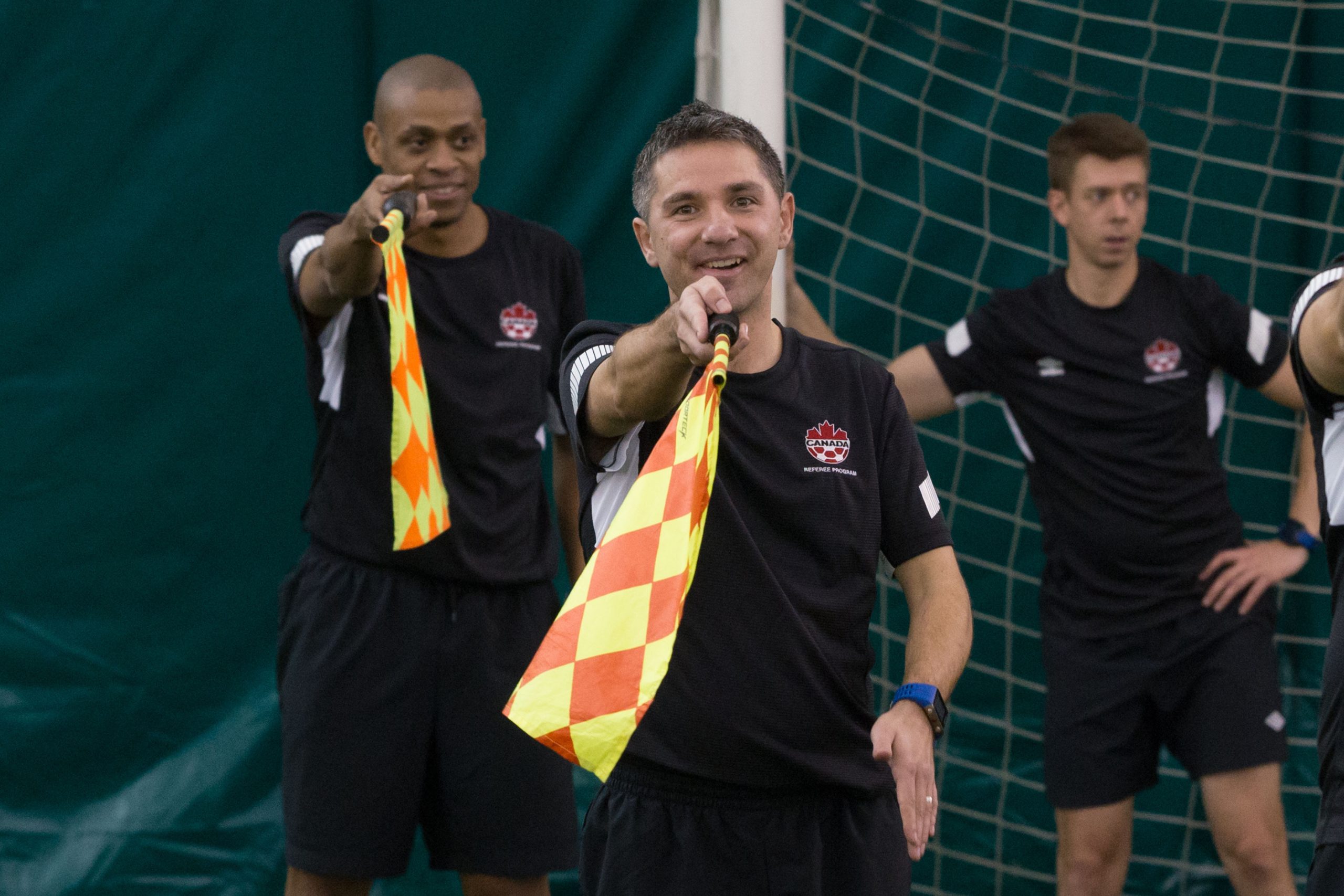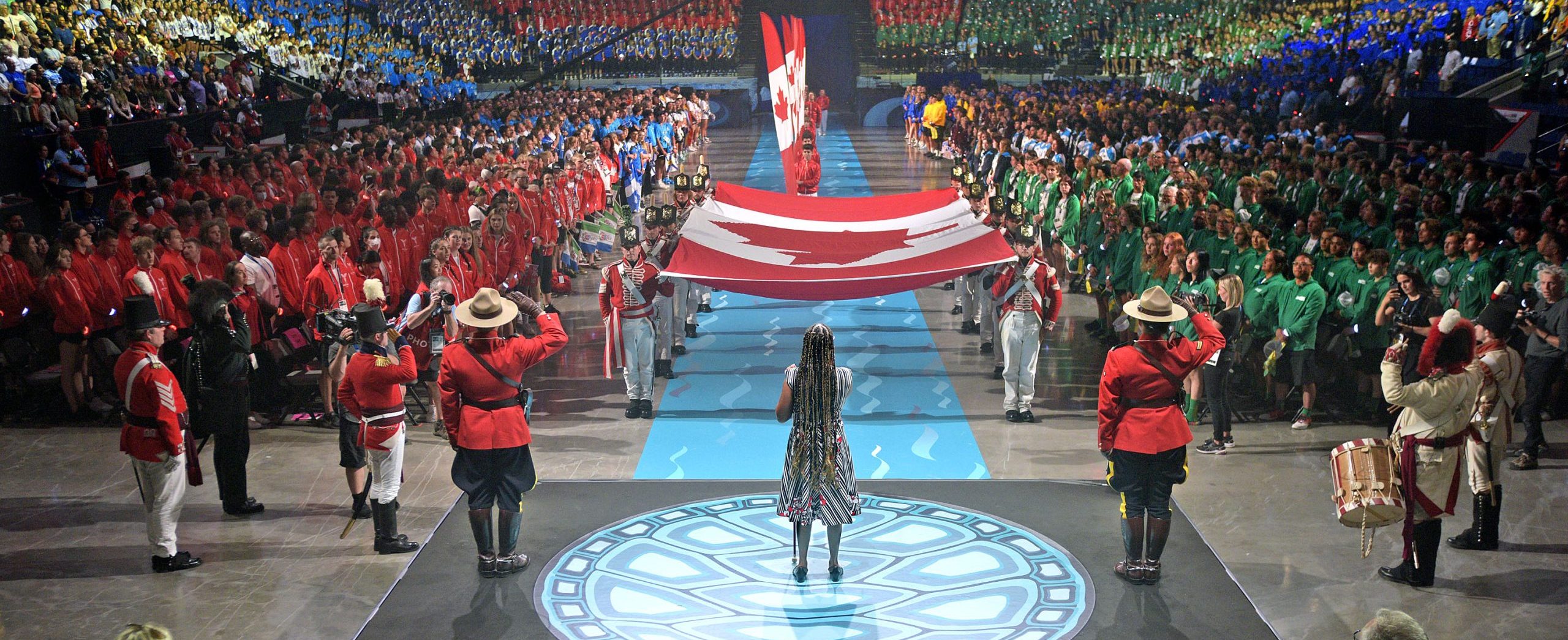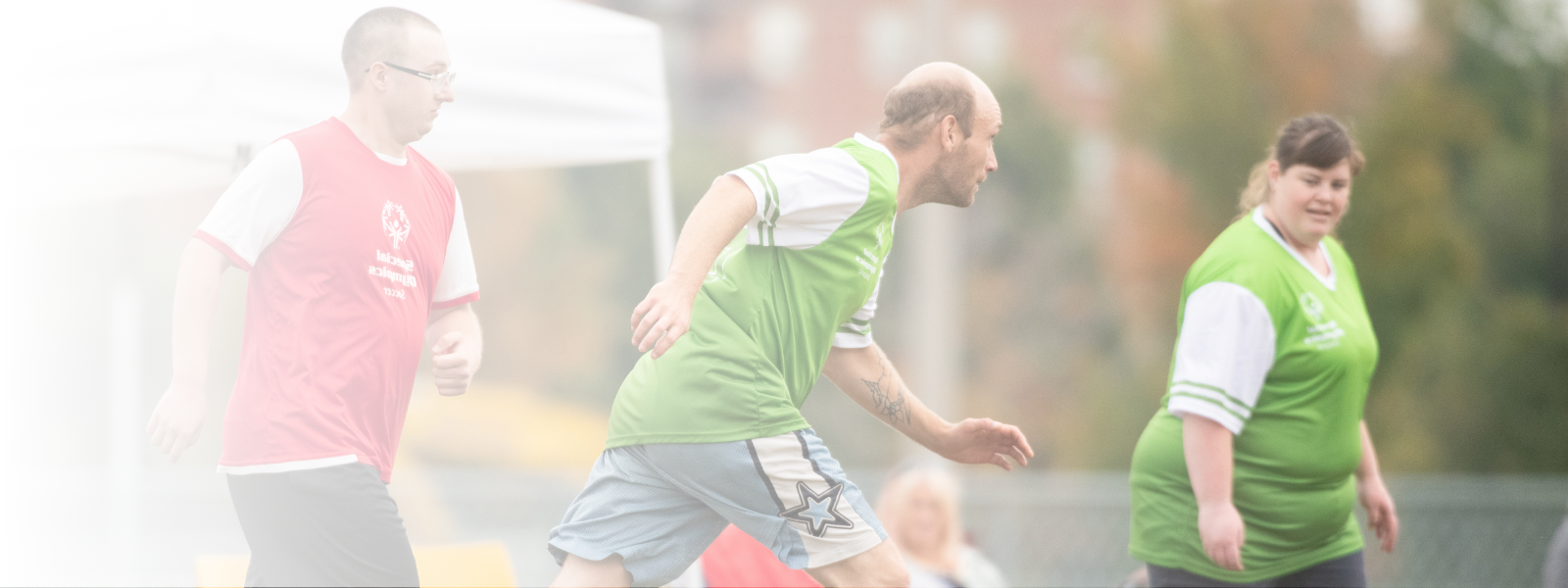Outcomes and Objectives of the Canadian Sport Policy 2025-2035
Canadians are Healthy. Everyone in Canada can enjoy the benefits of sport, including physical, emotional, social, spiritual, and mental wellbeing.
Communities are Strong and Resilient. Sport brings people together, builds resilience, and contributes to culture, identity and the economy.
Canada is an International
Leader. Canada is recognized for sport excellence, and for the health, happiness, and pride that sport inspires.
The core criteria used for the development of the Canadian Sport Policy 2025-2035 and its associated outcomes and objectives are:
- Focus on positive sport experiences for everyone who participates in and contributes to sport in Canada.
- The outcomes and objectives are values-driven and focused on achieving the vision of the Canadian Sport Policy 2025-2035.
- Recognize that the universal values associated with sport are operationalized in different ways according to both sport contexts – Participation and Performance.
- Capture what we heard from Canadians and clarify directions and accountabilities for action.
- Recognize that each government and each organization will determine how best to advance and evaluate progress on the areas for action, and will advance their own action plans and policies in line with individual jurisdictional mandates and priorities.
The Objectives of the Canadian Sport Policy 2025–2035 as it relates to the governments, organizations, and people as they support the contexts of Participation and Performance are as follows:
GOVERNMENTS:
- Governments ensure organizations are resourced and held to appropriate standards to effectively perform their safety functions. (Healthy and Safe / Responsibility and Accountability)
- Governments ensure resources are provided to organizations, initiatives, and agencies focused on ensuring that sport is safe. (Fairness and Integrity)
- Governments ensure support is provided to initiatives that welcome newcomers, underrepresented, and Indigenous Peoples to sport. (Inclusion and Accessibility / Diversity)
- Governments provide resources so that all Canadians can access and participate in physical education, sport, and physical activity. (Inclusion and Accessibility / Fairness and Integrity)
- Governments support initiatives and events that deliver benefits to communities and support Calls to Action 87-91 of the Truth and Reconciliation Commission of Canada (2015). (Community-Building / Inclusion and Accessibility / Fairness and Integrity)
- Governments collaborate closely with counterparts in physical activity and recreation sectors to maximize the health outcomes of sport. (Healthy and Safe)
ORGANIZATIONS:
- Sport organizations follow standards and best practices, in compliance with applicable norms and laws, to ensure safety in sport. (Healthy and Safe / Responsibility and Accountability)
- Sport organizations maintain appropriate standards for governance and accountability, and establish and enforce measures to ensure sport is safe. (Fairness and Integrity / Responsibility and Accountability)
- Social agencies and sport organizations collaborate to support sport programs addressing the diverse needs of participants in communities. (Inclusion and Accessibility / Diversity)
- Sport programs and facilities are accessible, affordable, and appropriate for participants of different means and abilities. (Inclusion and Accessibility)
- Organizations hosting international events and Games adopt a hosting strategy in line with best practices to maximize and leverage economic, social and community benefits. (Community-Building)
- Sport organizations support unstructured and non-competitive forms of physical activity, including outdoor education and Indigenous land-based activities. (Healthy and Safe / Fun / Community-Building)
PEOPLE:
- Participants, parents, and leaders know what constitutes a safe sport environment, and have the training, protocols, and resources to act. (Healthy and Safe)
- Participants are supported by quality coaches, officials, and administrators trained and resourced to deliver fair, ethical sport. (Fairness and Integrity)
- Sport leaders prioritize healthy activity in safe, positive, participant-centered settings in the design of programs, and athlete development pathways. (Healthy and Safe / Fun)
- Sport leaders have the knowledge and resources to adapt sport environments and offerings to ensure a diverse range of participants feel safe, valued and included. (Inclusion and Accessibility / Diversity)
- Sport leaders and administrators are aware of potential barriers to participation and have the training and resources to reduce or eliminate the barriers.. (Inclusion and Accessibility)
- Sport leader and volunteer capacity in communities is increased to support training, program delivery, and the hosting of events. (Community-Building)
- People in Canada have opportunities and the support they need to realize their goals and ambitions through sport—whatever those goals may be. People are encouraged to pursue their ambitions in environments that encourage and foster the pursuit of excellence. (Ambition)
Implementing the Canadian Sport Policy 2025-2035
AN AMBITIOUS POLICY DEPENDS ON WORK, RESOURCES, AND PARTNERSHIPS FOR PROPER IMPLEMENTATION.

The Canadian Sport Policy 2025-2035 presents a shared vision, values, and outcomes and objectives for governments to inspire sport leaders and organizations as they develop their own programs and policies, in complement to their jurisdictional mandates and priorities. It calls upon everyone – sport, recreation, physical activity and health organizations, educational institutions, social agencies, governments, and indeed, anyone who calls Canada home – to work together to enable everyone to grow, excel and achieve wellbeing through sport.
Successful implementation will require:
- Federal-Provincial/Territorial Priorities for Collaborative Action.
- Cooperation of relevant departments within each government (e.g., sport, health, education, social services, immigration and citizenship, sport and recreation infrastructure, Indigenous services, and many others) to explore the ways to achieve the outcomes and objectives of this Policy for the benefit of all.
- Commitment of non-government organizations, particularly sport organizations, to draw on this Policy in the development of policies and action plans, and to promote this Policy to their members, partners and stakeholders.
- Strategic communication of the Policy, its outcomes and objectives, and progress in its implementation to everyone involved in sport to facilitate ongoing engagement.
- Monitoring and evaluation to support implementation progress and share knowledge of effective practices across sport systems in Canada.
- Oversight to ensure progress and accountability, and to respond to emerging opportunities during the lifespan of the Policy.
Measuring Success
Each government and organization is responsible for monitoring and evaluating its own contributions to achieving the Policy’s outcomes and objectives. Research and innovation are the foundation of progress. Actions stemming from this Policy need to be guided by evidence and continuously evaluated to ensure success. Federal-Provincial/Territorial work groups will play a crucial role in the process by focusing on monitoring, evaluation, data collection, and coordination to access and understand the impact of the Canadian Sport Policy 2025-2035. Respect for the diverse ways that knowledge can be acquired, and engagement with the people and communities impacted through the research process is a priority. Effective monitoring and regular reporting are the basis of both policy implementation and accountability.
The Canadian Sport Policy 2025-2035 will guide collaborative actions and other related action plans. Clearly linking policy goals to the outcomes and objectives will facilitate effective implementation and evaluation. The Federal-Provincial/Territorial Sport, Physical Activity and Recreation Council (SPARC) is the steward of important monitoring and reporting work, ensuring meaningful and ongoing engagement with key stakeholders to continually learn and improve.
A Pan-Canadian Approach

This Policy is informed by, consistent with, and complementary to many strategies and frameworks, including:
- The Framework for Recreation in Canada (Canadian Parks and Recreation Association, 2015),
- A Common Vision for Increasing Physical Activity and Reducing Sedentary Living in Canada: Let’s Get Moving (Federal, Provincial and Territorial Governments, 2018),
- Active Canada 20/20 (ParticipACTION, 2012),
- Canadian High Performance Sport Strategy (2019),
- Universal Code of Conduct to Prevent and Address Maltreatment in Sport (2022),
- The Calls to Action of the Final Report of the Truth and Reconciliation Commission (2015), particularly Calls to Action 87 to 91, the federally endorsed United Nations Declaration on the Rights of Indigenous Peoples Act (2021), and the National Strategy for Indigenous Sport, Physical Activity, Recreation, and Traditional Practices.
This Policy is also complementary to Federal-Provincial/Territorial policies, strategies, and regulations governing sport. These include policies and statements related to anti-doping, maltreatment, discrimination, and concussion, such as the Red Deer Declaration for the Prevention of Harassment, Abuse and Discrimination in Sport, policies which recognize and support the rights of underrepresented groups, and others.
This Policy recognizes the roles and responsibilities of the Federal-Provincial/Territorial governments described in the National Recreation Statement (1987) and other governmental agreements. Nothing in the Policy should be interpreted as overriding the jurisdiction of each respective order of government. Each government will determine how best to advance the goals and areas for action within this Policy, considering their own jurisdictional mandates and priorities. Further, it is recognized that all governments may not adopt or recognize all the policies, strategies and frameworks listed, or may adopt or recognize variations of them, as necessary to fulfill their mandates and priorities.
From an international policy perspective, this Policy supports the objectives of such policies as the World Anti-Doping Code, the World Health Organization Global Action Plan on Physical Activity, the United Nations’ Sustainable Development Goals, including Goal 3 – good health and wellbeing.
